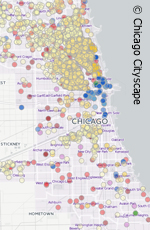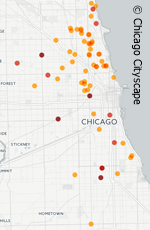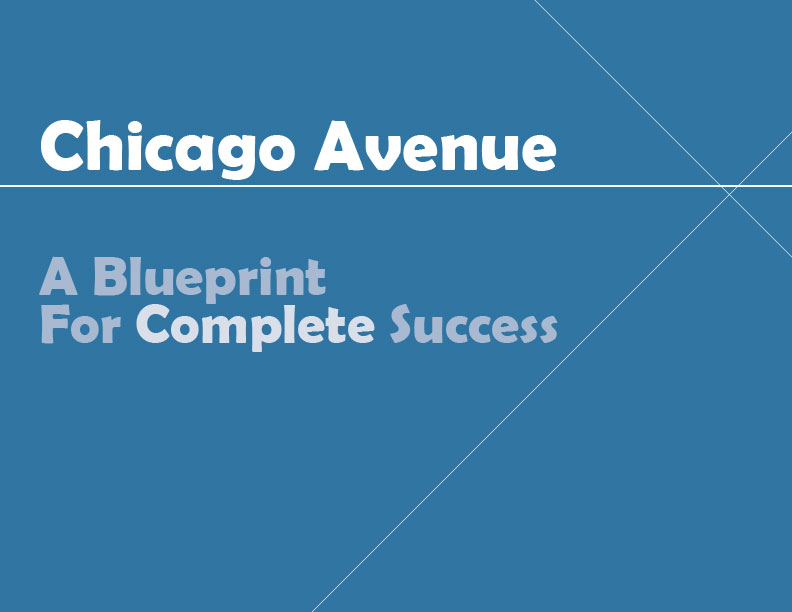Sustainability
The work on this page includes academic and professional pieces about bike lanes, bioswales, and renewable energy. Much of my other work incorporates sustainable principles as well, particularly my historic preservation themed projects - due to the embodied energy of existing buildings and energy retrofits. You may read more about my thoughts on sustainability on the Urban Planning page.
Ten Years of Teardowns
 Teardowns are an environmental issue. Construction waste can account for as much as 40% of the solid waste in this country, so finding ways to reduce this waste stream can have big environmental impacts. Also, studies show that newly constructed buildings that are 30% more energy effecient than older buildings can take decades to consume less energy, when the energy costs of mining, manufacturing, and transporting materials along with energy used to construct the building is considered.
Teardowns are an environmental issue. Construction waste can account for as much as 40% of the solid waste in this country, so finding ways to reduce this waste stream can have big environmental impacts. Also, studies show that newly constructed buildings that are 30% more energy effecient than older buildings can take decades to consume less energy, when the energy costs of mining, manufacturing, and transporting materials along with energy used to construct the building is considered.
This Chicago Cityscape study of a decade of teardown data provides insights into the most common types of teardowns, which neighborhoods they most frequently occur in, and their frequency over time.
Solar All Over
 This Chicago Cityscape newsletter discusses the distribution of solar projects that have been permitted in Chicago.
This Chicago Cityscape newsletter discusses the distribution of solar projects that have been permitted in Chicago.
Projects exist citywide, but the northside has the most. The interactive map of solar power projects includes details about cost, building, and type of solar project. The Shedd Aquarium has the most solar panels, and the second largest solar array is at the Institute of Cultural Affairs.
The number and cost of solar projects has increased over time, and it lept up in 2015.
Peak Geothermal
 Geothermal projects are not common projects in Chicago, and the number of new projects per year is decreasing. This Chicago Cityscape study dives into where these projects are, how much they cost, which building types use them, and how many have been built over time, using charts and an interactive map.
Geothermal projects are not common projects in Chicago, and the number of new projects per year is decreasing. This Chicago Cityscape study dives into where these projects are, how much they cost, which building types use them, and how many have been built over time, using charts and an interactive map.
This newsletter also describes how geothermal technology works, and why the EPA and the Department of Energy think geothermal projects are a good idea. It is encouraging to see geothermal used in affordable housing and single family homes alike. I hope that geothermal and other renewable energy sources can become widespread, but at the moment geothermal projects are rare.
Chicago Avenue: A Blueprint for Complete Success
 Bioswales, permeable pavement, public transit, pedestrian amenities, motorists, and bikes are all considered in this proposal for making Chicago Avenue a "complete street" between Damen and Milwaukee.
Bioswales, permeable pavement, public transit, pedestrian amenities, motorists, and bikes are all considered in this proposal for making Chicago Avenue a "complete street" between Damen and Milwaukee.
Due to the street's dimensions and the Average Daily Traffic (ADT), Chicago Avenue qualifies for a road diet; however the space gained from removing one lane of traffic in each direction is not enough to create bus lanes, bike lanes, and wider sidewalks without also removing street parking. Read more to learn which features were prioritized.
This group project was a collaborative effort with Brendan Dodge and Martin Menninger. My contributions included the oval GIS maps, street section diagrams, final plan diagram, document layout, and writing the following sections: related plans, pedestrians, economic development, greenspace & environment, stakeholders, and alternative considerations.